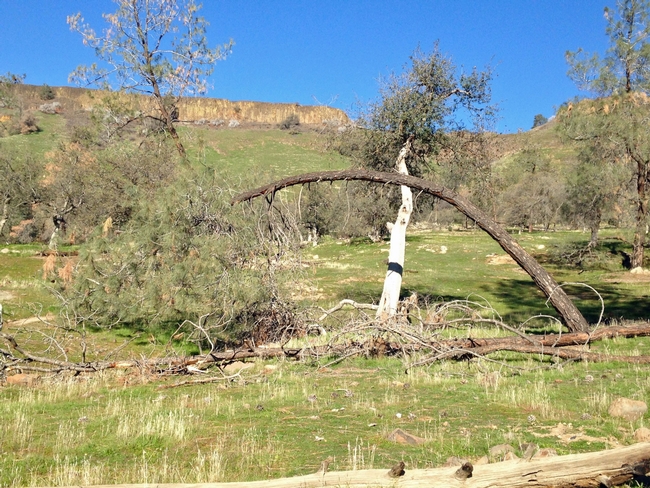Rain helps rangeland trees and grasses begin recovery
“Water stress renders oak trees more likely to express early leaf browning and to be more susceptible to damage from native and introduced tree pests and diseases,” said Bill Tietje, UC Cooperative Extension natural resources specialist. “One or more of these (drought years) could be the last straw for an already stressed tree.”
Recent rain has helped, but trees on shallow soil or on warm, south-facing hillsides are especially vulnerable.
“We are getting many reports of trees that are on the way out or are dead,” Tietje said. “The drought is certainly weakening many trees, and those that are old or have oak worm are dying.”
The Tribune reported that stressed valley oaks have a tendency to drop limbs or for the whole tree to drop, according to a report by Mary Bianchi, UCCE advisor and director in San Luis Obispo County. This happens because the tree closes its pores to conserve water while its roots continue to soak up what water they can.
“This causes water to build up in the trunk and limbs,” Bianchi wrote. “Apparently, the extra weight can cause limbs and maybe the whole tree to break, by some reports as though the tree exploded.”
Rangeland grasses are greening the foothills
The grassy surface of rangeland is faring better, reported the Modesto Bee. Abundant rain in December brought new growth to rangeland that has suffered badly in three years of drought.
“This December has been great for growing grass, lots of moisture and warm temperatures,” said an email from Theresa Becchetti, a UCCE livestock and natural resources advisor in Stanislaus County. “I'm not counting any chickens before they hatch, though.”

